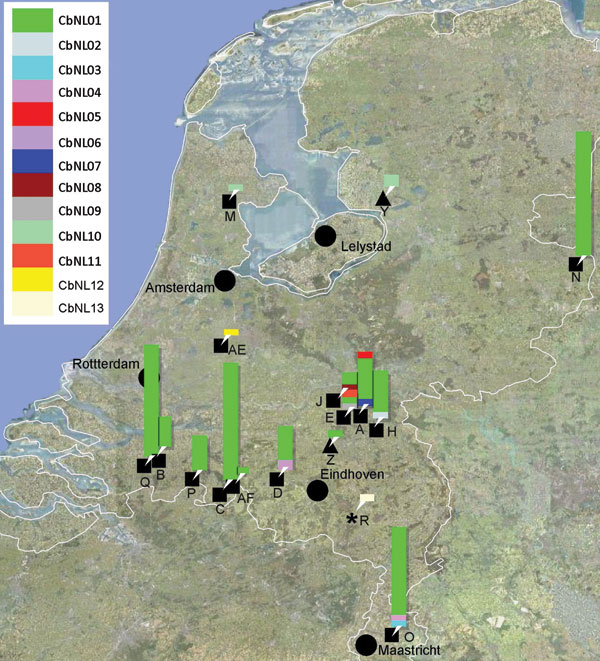Volume 17, Number 4—April 2011
Research
Molecular Epidemiology of Coxiella burnetii from Ruminants in Q Fever Outbreak, the Netherlands
Figure 1

Figure 1. Map of the Netherlands showing locations of farms sampled during the Q fever outbreak, 2007–2010. Farms are indicated by letter and ruminant species (black squares, goats; black triangles, sheep; black star, cattle); genotypes of Coxiella burnetii found per farm are indicated by bars at each farm’s location. The height of the bar indicates numbers of isolates per genotype.
Page created: July 25, 2011
Page updated: July 25, 2011
Page reviewed: July 25, 2011
The conclusions, findings, and opinions expressed by authors contributing to this journal do not necessarily reflect the official position of the U.S. Department of Health and Human Services, the Public Health Service, the Centers for Disease Control and Prevention, or the authors' affiliated institutions. Use of trade names is for identification only and does not imply endorsement by any of the groups named above.